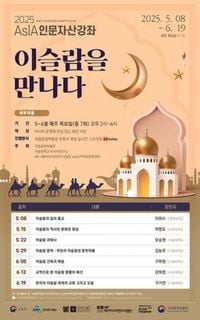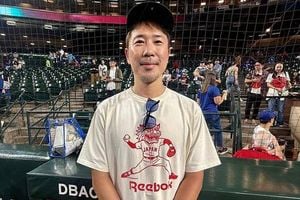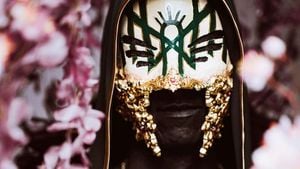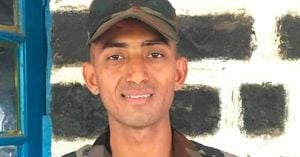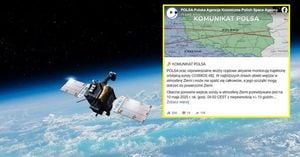The National Museum of Korea, in collaboration with Seoul National University's Asia Research Institute HK⁺Mega Asia Research Project Group AsIA Regional Humanities Center, is set to launch a comprehensive lecture series titled '2025 AsIA Humanities Asset Lecture - Encountering Islam'. This series will take place over seven sessions from May 8, 2025, to June 19, 2025, aimed at deepening understanding of Islamic culture and history.
Announced on May 7, 2025, the lecture series is part of a broader initiative that began in 2021, designed to expand and popularize knowledge of Asian humanities assets. The 'AsIA Humanities Asset Lecture' program has previously included topics such as 'Cities of the Asian Maritime Silk Road' in 2021, '漆, Painting Asia' in 2022, 'The History and Culture of Mesopotamia' in 2023, and 'The Art and Culture of Southeast Asia' in 2024.
This year's focus on Islam is particularly timely, especially with the upcoming opening of the Islamic room at the National Museum of Korea, scheduled for November 2025. The series aims to provide attendees with a rich understanding of the Islamic world, enhancing their appreciation of the museum's future exhibition.
The first lecture, titled 'The Life and Culture of Islam', will kick off the series on May 8, 2025. This session promises to provide a broad overview of Islamic history and culture, setting the stage for deeper exploration in subsequent lectures.
On May 15, the second lecture will delve into 'The History and Formation of the Islamic Cultural Sphere', shedding light on the establishment of the Islamic empires and the evolution of various dynasties. This session will be crucial for understanding the historical context of Islamic culture.
Following this, on May 22, the focus will shift to 'Islamic Science History', where attendees will learn about the significant advancements in science and alchemy that emerged within Islamic civilization. This lecture is expected to highlight the contributions of Islamic scholars to global knowledge.
On May 29, the series will continue with 'Islamic Literature: The Quran and Islamic Literary Works', exploring the values and perspectives reflected in the Quran and other significant literary pieces from the Islamic world. This session aims to provide insight into the literary heritage that has shaped Islamic thought and culture.
The first lecture in June, scheduled for June 5, will cover 'Islamic Architecture and Art', examining the religious and nationalistic themes expressed through Islamic architectural styles and art forms. This discussion will enrich participants' understanding of how these elements are intertwined with cultural identity.
On June 12, the sixth lecture titled 'Expansion of Islamic Goods Seen Through Exchange' will explore how trade and commerce facilitated the spread of Islamic culture, particularly in Southeast Asia. This session will provide a historical perspective on the economic interactions that shaped cultural exchanges.
Finally, the series will conclude on June 19 with 'Exchange Between Korea and the Islamic World, Past and Present'. This lecture will focus on the historical and contemporary interactions between Korea and the Islamic world, providing a nuanced understanding of cultural exchanges.
The '2025 AsIA Humanities Asset Lecture - Encountering Islam' series will be broadcast live on the National Museum of Korea's YouTube channel every Thursday from 2 PM to 4 PM, starting on May 8, 2025, and concluding on June 19, 2025. No prior registration is required, allowing anyone interested to participate in this enriching experience.
After the live sessions, recordings of the lectures will be available for viewing on the National Museum of Korea's YouTube channel as well as on the Seoul National University Asia Research Institute AsIA Regional Humanities Center YouTube channel, ensuring that this valuable knowledge can be accessed by a broader audience.
This initiative not only aims to educate but also to foster a deeper appreciation of the diverse cultural heritage found within the Islamic world, making it an essential addition to the National Museum of Korea's ongoing efforts to promote understanding and dialogue among different cultures.
